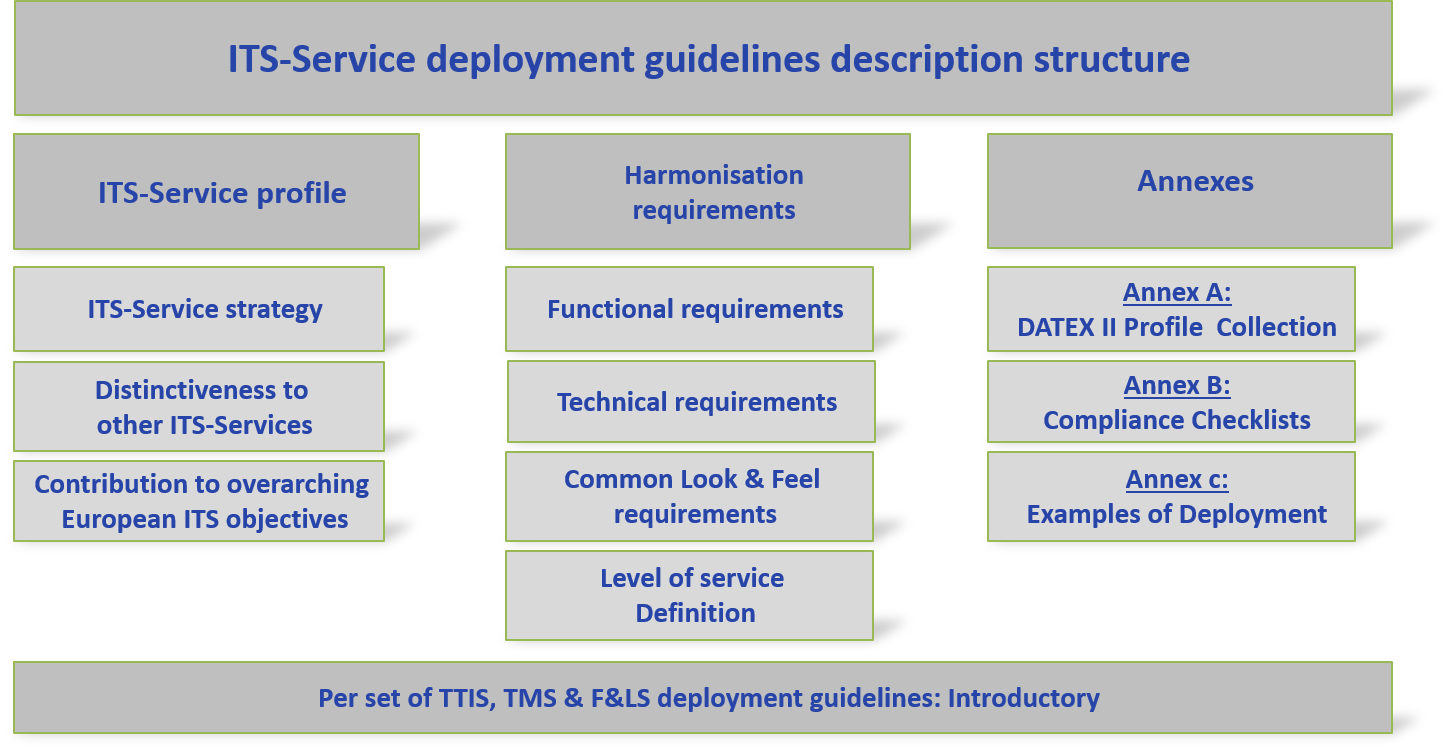Following the overall harmonisation concept, the description structure of the ITS-services in this handbook consists of four parts, which may be depicted as Figure 4:

The ITS-Service profile gives an overall explanation of the ITS service.
- “Semi-experts” (decision makers…) find all basic / general and strategic information about the particular ITS-service,
- the benefit of the service is categorized in terms of safety, environmental impact and efficiency,
- the profile of this particular service compared to the other services is highlighted and
- where the ITS-service can potentially be delivered using C-ITS solutions a reference to the relevant C-ITS use-case is given.
In Part Harmonisation Requirements “Experts” (deployment, operation…) find requirements from the operator perspective (especially where operation involves several authorities). Part A should give answers to questions around what is needed for the harmonisation of European ITS core services:
- to ensure interoperability/continuity on the organisational and technical level with a similar neighbouring ITS-service provided by another organisation
- to ensure data and information provision to national access points or other open traffic and traveller information portals
- to present itself to the road user with a common harmonized European look and feel
- to offer assessment based on harmonised level of service and operational environment criteria
Annex A depicts the DATEX II Profile Collection of the specific ITS-Service
Annex B lists mandatory features required for ITS service harmonisation in the form of a table.
Annex C is a collection of examples of deployments for the specific service.
Each set of guidelines (TIS, TMS and F&LS) furthermore share a reference document that collects content that is common to all TIS, TMS or F&LS guidelines respectively.